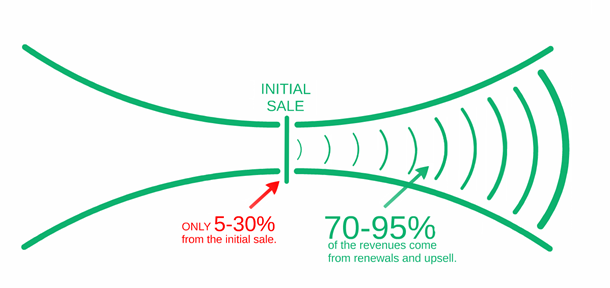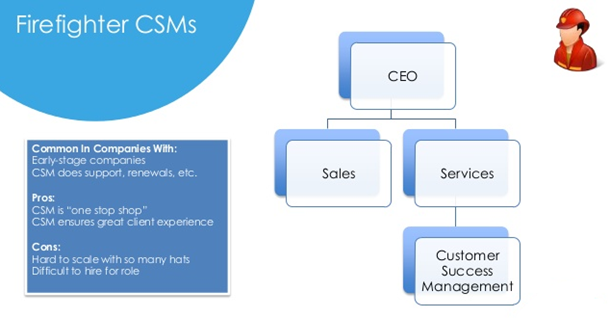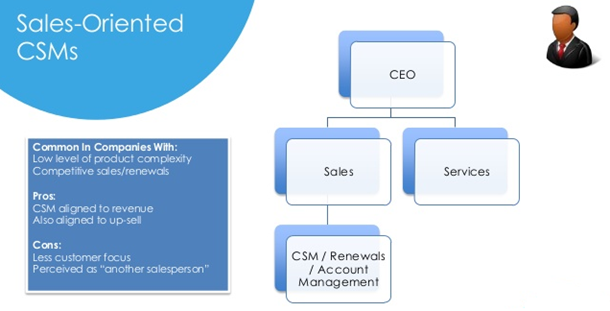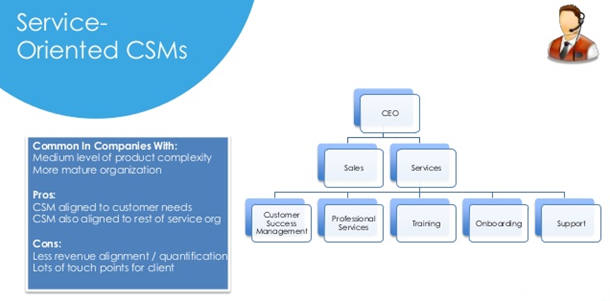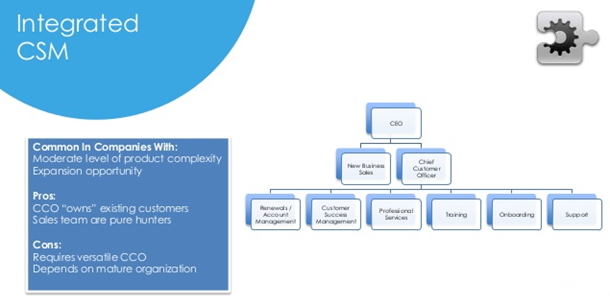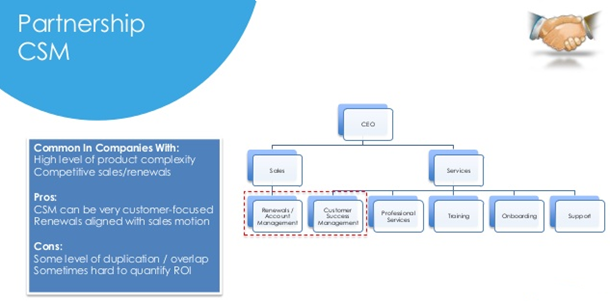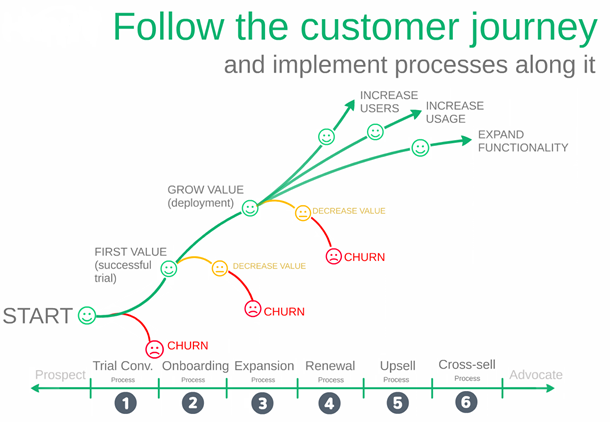The health of a SaaS business is directly tied to its ability to retain its customers and prevent churn. To do this, they have to ensure that their customers are happy. That means making sure they get the promised business benefits they signed up for. This blog post discusses how to measure customer happiness, and how to actively manage your business to achieve it. It also looks at the newly emerging Customer Success function.
Many of the ideas in this post came out of a meeting that we held for Customer Success executives in Matrix Partners portfolio companies. I would like to thank the participants in that meeting for their contributions to this post as well as Guy Nirpaz at Totango, and Nick Mehta at Gainsight.
Quick Re-Cap: Why Churn is SO important
In this blog post I discuss “Why Churn is SO critical to success in SaaS”. Here is a short summary:
To borrow a slide from Guy Nirpaz, the CEO of Totango: if you are in a recurring revenue business, most of your revenue comes after the initial sale:
Replacing churn with new bookings becomes harder and harder as you scale
In the diagram below, I have shown an example SaaS company in its third year with $10m of recurring revenue to renew, and then the same company in its sixth year when it has $100m to renew. I have shown a 2.5% monthly revenue churn rate, which amounts to a loss of 30% annually.
As you can see from the left hand chart, when the business is small, the amount of money lost due to churn is only $3m. This is not so serious, and can be fairly easily be replaced with new bookings. However, as you see in the right hand pie chart, when the company gets larger, the amount being lost to churn becomes huge. Finding an additional $30m in bookings just to stay at the same revenue level as the previous year is a huge problem.
There are two solutions to this problem:
- Reduce Customer Churn
- Achieve Negative Revenue Churn
Negative Revenue Churn comes when the expansion or upsell/cross sell revenue from the customers that don’t churn exceeds the revenue lost from the customers that do churn.
For more details on what it takes to get to negative revenue churn, you may want to read this post: Why Churn is SO critical to success in SaaS.
And, for information on how to calculate LTV when you achieve negative churn, I have written an article here: What’s your TRUE customer lifetime value (LTV)? – DCF provides the answer.
Public company investors have become very savvy about the importance of churn, and will pay a premium for stocks where the revenue churn rate is negative or zero.
To Stop Churn: Make Your Customers Happy
This much is obvious: if you want to stop your customers from churning, you will need to make them happy with your product/service. However what is less well understood is what makes a happy customer? Many SaaS companies believe this comes from engagement and usage of the product. However I believe they are on the wrong track, and I’d like to move the conversation to a higher plane. Customers bought your product to get a clear business benefit. To make them happy, I believe that you need to make sure they are getting the business benefits they hoped for.
This presents an interesting change in thinking for many startups. Because most startups are created by passionate product people, they tend to fall in love with their product and its features. Often this means that they lose touch with the simple messaging around business benefits. For example, let’s take one of my better known portfolio companies: HubSpot. HubSpot provides many interesting product features such as SEO, blogging tools, social media tools, a contact database, lead nurturing tools, email tools, etc. It’s easy to get carried away with making sure that the customer is using each of these tools. But in doing so we are losing sight of the key reason that the customer bought the product in the first place. I believe that HubSpot’s business value can be quantified in two simple sentences:
- Get More Leads
- Convert more of your leads into buying customers
If you were to ask any CEO if they want these benefits, I believe over 99% of them would say yes. But if you were to ask that same CEO if they were happy that their marketing person had spent five hours using a bunch of different features, they would likely ask why they were spending so much time, and they would want to know if there was a return on investment for all that time.
So a great starting point for making your customers happy is to make sure they are getting the business benefits that caused them to sign up in the first place. For some startups, this will mean taking the time to figure out a really simple way to express the key business outcomes that their product will deliver. That message should resonate with the CEO of your buyer if you had one minute to describe it to them in an elevator.
Quantify the Business Outcomes
Once you have identified the key benefits, ask the question of whether these can be quantified. Then ask the question: what numeric value would constitute success. i.e would 5% more leads be a good outcome, or would it take 50% more leads to make the customer happy?
Other Elements of Customer Happiness
There may also be other elements that make for customer happiness:
- There is a clear return on their time and money invested in using the product
- The product does not frustrate them with bugs, data loss, slow performance, irritating user interface, etc.
- There are no key missing features, or integrations with other products that they use
- They get good customer service when they call in to get help
- Other – (I would be interested in readers’ comments on other key items)
Happy Customers bring one other key benefit
Happy customers refer other customers, which are your best leads. Again to borrow a slide from Guy Nirpaz at Totango:
Measure Customer Happiness/Health
“If you cannot measure it, you cannot improve it” – Lord Kelvin
HubSpot may have been the first company to introduce the notion of a measurement to predict churn with their CHI score (Customer Happiness Index). The CHI score measured which parts of the product each customer was using, and awarded a higher score for features that were thought to be more sticky.
They had quickly realized that SEO was not particularly sticky, as the customer would do a lot of work in the early days, but after setting their site up correctly, they would have gained most of the benefits. Many churned at that point. However if the customer had hosted their blog with HubSpot, or was using HubSpot’s Contact Database to track customer details and behaviors, those were sticky features, and would make it harder for the customer to churn.
Recency and and frequency of activity would also help provide a good indicator of customer engagement.
However HubSpot soon found that although useful, CHI was not a great predictor of churn. Just because someone was using the product, they were not necessarily happy with the product.
But they were still on the right track: we need to find a way to measure customer happiness to be able to find unhappy customers and take corrective action before it is too late.
A possible solution: Quantify Business Outcomes
The following has not been proven, but I believe that a big part of measuring Customer Happiness is not to measure feature usage, but to measure business outcomes. For example, it’s not really relevant to see how long someone spent in the SEO module, but it is relevant to see whether they have increased their web site traffic and leads.
In an ideal world, we would measure the exact number of additional leads HubSpot was generating, and also the improvement in conversion rate. Then we would have the ability to show a clear return on investment for the time consumed and money spent.
These quantified business outcomes would enable HubSpot to measure the ROI their product was delivering to the customer. Sometimes using a product takes hard work and lots of time in addition to the money spent. e.g. the time and effort spent to create a good blog post is not trivial. Knowing you are getting a good ROI makes it far easier to sell the customer on why continuing to do that work is worthwhile.
This quantified ROI also makes for a perfect monthly or quarterly email to the business owner to keep them aware of how your product is delivering results, thereby pre-empting the question: “Why are way paying so much money for this service, and do we really need it?”.
The complete Customer Happiness Score
In addition to measuring the business outcomes, the complete Customer Happiness Score would also likely need to take into consideration the other items we mentioned above:
- The product does not frustrate them with bugs, data loss, slow performance, irritating user interface, etc.
- There are no key missing features, or integrations with other products that they use
- They get good customer service when they call in to get help
It is also perhaps worth stating that what we are really looking for is a Churn Prediction score, not just a Customer Happiness score. There are some other indicators that can be useful if you are trying to predict churn:
- Are they paying their bills on time? This is also an indicator of the customers’s financial health.
- Is their contract coming up for renewal?
- Who is the key user and key sponsor and have their roles changed? Having your power user or your sponsor leave is a big problem, tracking that relationship and their role or position at the company can be a key indicator.
- Are they engaged in your customer community? Are they coming to your user conference? Are they subscribed to your emails?
- Are they referring other customers?
Managing Customer Success: a company wide effort.
Now that we have a way to measure Customer Happiness/Health (or likelihood of churning), we can start to look at ways to manage and improve this.
Let me start by saying that managing churn and customer happiness is not a simple function that can be handed off to one department of your company.
Managing Churn & Customer Happiness is not a simple function that can be handed over to one department.
Customer happiness is impacted by nearly all departments in the business:
The obvious contributors
- Customer Support
- Customer on-boarding, consultants
- Renewals sales team
Less obvious contributors
- Pricing – needs to reflect the value received by the customer
- Product Management: not just the right features, but also coming up with pricing axes, and up-sell options to get to negative churn
- UI and UX designers
- Product Development
- Quality assurance
- Training & Documentation
- Operations – responsible for uptime and application performance
- Sales – can damage customer happiness by over-promising
- Marketing – can also set the wrong customer expectations
Given all of the above, how do we go about managing Churn and Customer Happiness?
The Holistic and Specific Approaches
Given the holistic nature of the problem, we clearly need a holistic approach that makes sure each department understands their role, and how they contribute. This starts at the very top of the company, and needs the CEO to articulate the importance of Churn and Customer Happiness to the entire company. This should go a step further, by having the CEO provide each department a clear indication of how they contribute, and asking for this to be measured, with quantifiable targets for each quarter.
Some, like product management, may be hard to quantify. But here it may be useful to go back to the key business benefits, and have them answer the question of why the features they are recommending will lead to clear, highly valued, business benefits. i.e. in the HubSpot case, will the customer get more leads, or better conversion rates? Or is there some new valuable business benefit? This will help prioritize competing features.
In addition to this holistic approach, there is also room for another important tactic: dedicate specific resources to the Customer Success function. This takes the view that unless there are dedicated people thinking about customer success all the time, it will not happen. Someone has to beat the drum and have it be their top priority.
Building a Customer Success Organization
Even though customer happiness is a company-wide initiative, there are two obvious starting places where we can help ensure lower churn:
- Dedicate individuals to focus solely on getting customers to the promised business outcomes by through better on-boarding, training, consulting, etc.
- Dedicate individuals to the job of ensuring that renewal sales happen.
These are the key starting functions to incorporate into your Customer Success Management (CSM) group.
As Nick Mehta, the CEO of Gainsight described at the Matrix portfolio company event, there are five ways that they have seen this structured organizationally:
Single Member Model: Firefighter CSM
The first model that we often see in smaller companies is a customer success management team, maybe one person initially. They might report into services, or they could report directly to the COO or even to the CEO. That team, that person in some cases, does everything from on-boarding to training, support, renewal, upsell, reference management, etc. That’s great, because in the early days, that person is your eyes and ears. If you’re the CEO, you should be meeting with them every week and listening to what you’re hearing from the customers, what’s working and what’s not. That team is a really good starting point to drive customer success.
The challenge is that it’s hard to scale. It’s hard to have one person that can do on-boarding training, up sales, renewals all together. It’s a great place to start, but probably not a great place to end up over time.
Sales Oriented Model
Another model is a sales oriented model where customer success is part of the sales function. People might call it customer success management, or renewals, or account management. It might report into a head of sales who runs both new business sales and existing customer revenue.
That works really well in businesses where you’re selling to smaller customers and the product is lower touch, where there’s less customization, less deployment. It’s less tied into a services function, and it’s more about a commercial renewal or an upsell. We’re seeing a lot of companies do this, especially if they sell to small to medium-sized businesses.
Service Oriented Model
You can also have customer success management as a function in services. Typically services has professional services that might do the on-boarding. You’ve also got training and support. Customer success management is a peer to all of those. We see this a lot in higher touch businesses where the product is more complicated, maybe the deals are bigger. Customer success management is like the eyes and ears into the customer, and like a traffic cop to bring in all the other functions as needed.
Sometimes there’s confusion for a customer of who to go to when. When do you go to the support team, when do you go to the training team? The customer success management person ends up solving that by being the traffic cop to direct you to the right place.
Integrated Model
In the integrated model, you actually have a Chief Customer Officer who owns revenue for existing customers. Underneath them, they might have a customer success management team that’s very customer-focused, and then a renewals team that’s responsible for actually getting the renewal. The customer success management team is all about adoption, and make sure customers are getting value. The renewal team is specifically focused on getting the renewal order.
The positive with this structure is that the CSM team is the customer’s friend and the renewal team is the sales rep. The customer still feels like the CSM is on their side, but there’s somebody that’s focused on getting the order that knows how to sell, and who is accountable for a quota. The two groups obviously have to work very tightly together. The Chief Customer Officer, at the end of the day, owns revenue totally from existing customers. And your Head of Sales ends up being totally focused on new business sales. That kind of focus is usually a good thing.
Split Model
The last model we see sometimes in typically the most mature companies is a renewal team that reports into sales that’s responsible for existing customer revenue, and a CSM team that reports to services. Despite the different bosses, they’re tied together at the hip and work side by side. They collaborate. There’s a little bit of an issue around who does what, as well as duplicate work in some cases. But this seems to work really well in more mature or larger companies.
Standardize the interventions when your customers aren’t doing well.
Now that we have a Customer Happiness/Health Score, we have a way to understand who is not doing well, and to take action.
There are different ways to think about doing this depending on the size/value of the customer. We recommend segmenting your customer base, and developing different tactics for each segment:
- In the high-end accounts, consider a very consultative and high touch personal approach. This can still be highly data driven, to make sure you are only spending time with the customers that need it.
- In your medium-sized accounts, consider an approach where you intervene just in time. i.e. just when the data starts to show that they’re going off the railroad tracks.
- In your small accounts consider using as much automation as possible. i.e. use a system like HubSpot or Marketo to automate the outreach to your customers. These communications can be triggered by the data you are collecting to create your Customer Happiness score.
For the automated approach, look at triggering in app messaging based on usage patterns. For example if a customer has used part of your product, but not yet moved on to the place where they will derive the really powerful business benefits, then you may want to message them in the application itself, or by email, along the following lines:
“We see you have not yet tried the XYZ feature. By using that feature, we can deliver you the following business benefits. If you are interested in learning more, here is a video that shows you how it works.”
Totango have a slide that I like, shown below, that encourages the design of specific processes at each stage of the customer’s lifecycle:
Customer Success Management works for Free Trials as well
As the diagram above points out, the customer journey often starts with a free trial. At this point, even though they have not yet become a customer, many of the same concepts apply to making sure their trial is successful. In particular, it is important to figure out what a successful trial looks like, and to track the customer’s journey to make sure they get to the point where they have seen clear proof that the product works. The same tools we use to track product usage can be applied to provide that data.
Customers that are not succeeding may warrant calls or emails, and those that are succeeding are clear prospects for a call from the sales organization to close an order.
The Role of Marketing
One of readers was kind enough to point out something that I had left out of the original version of this post: the important role that marketing plays in Customer Success. Most think of marketing’s role as helping with customer acquisition, and the thought processes for how to do that are well evolved. However marketing can play a key role in helping make customers more successful, automating processes that are being done in a one-to-one human way by the customer success management team. Consider making this a new priority within marketing, with potentially dedicated resources.
The “Crown Jewels” Data Repository
As soon as you start to collect data about your customers happiness from a variety of sources, you will start to realize that you need somewhere to put all of this information. For some time now, I have been talking about the importance of building a database that contains the following two tables:
The Buyer Attributes table includes all the factual information such as Company name, revenue, vertical industry, etc.
The Behaviors table collects all the information that we know about their digital actions: which pages on our web site have they visited, how recent and how often, which emails have they opened, what features of our product have they used, have they submitted any support tickets, what orders have they placed, etc.
This data allows you to create customer segments, such as all large customers that have started a trial, and used this feature, but not that feature. That can trigger an automated message inside of the application, or an email.
It can also be used to look for predictive patterns. For example:
- What customer attributes are correlated with high levels of churn?
- What are the best indicators that a customer is a good candidate for an upsell to an additional product module?
Today these two tables exist inside of Marketing Automation products like HubSpot and Marketo, and additional data can be fed into them. Parts of them also exist in Customer Success products (see below). As a SaaS company, you will face an important decision: which of these will become your master for this data? As you progress further in your lifecycle, this data will become more and more valuable, and you should protect yourself from the potential for lock-in that could exist with the vendor that holds that data.
Customer Success Products
There are several startups that are focused on providing software to help manage customer success. I first wrote about these two years ago here: “SaaS CEOs: Measure Customer Engagement – Increase Conversions & Lower Churn”. Today the field includes:
- Totango
- Gainsight
- BlueNose
- Evergage
- ScoutAnalytics
- FrontLeaf
- Intercom.io
And possibly others that I am not aware of. We are considering doing an updated review of these products in a future blog post. If the idea of this appeals to you, please leave a comment to let me know.
Conclusion
To summarize, here are the key points:
- Churn is extremely important for success in SaaS
- There are two ways to deal with churn:
- Reduce the number of customers that are churning
- Get to Negative Revenue Churn by increase revenues from the remaining customers
- Using variable pricing axes to capture expansion revenue (see “Multi-axis Pricing: a key tool for increasing SaaS revenue”
- Upsell & cross sell
- Actively Manage Churn with focused efforts
- A holistic company-wide awareness of the importance of churn, led by the CEO
- Quantified departmental objectives for all important departments
- A dedicated Customer Success organization
- A holistic company-wide awareness of the importance of churn, led by the CEO
- For the structure of the Customer Success organization, refer to the diagram below, and the article above to choose which is most appropriate for your company
- To identify customers at risk, measure Customer Happiness/Health
- Focus on key business outcomes the deliver the benefits that caused the customer to sign up, not feature usage
- Use that score together with knowledge of when contracts are up for renewal to pro-actively ensure that customers are happy
- Implement standardized responses to turn around customers who are not healthy/happy
- Use many of the same Customer Success Management tools to improve the conversion rates on your Free Trials
Looking to build customer loyalty through social media? Don’t forget to add your business to Top4 Marketing
List your business, create your own digital store to sell goods and services, and share posts on social media. Promote your business on Google instantly! Should you need help with local digital marketing then view our new Google Marketing Platform and services Top4 Marketing
Get Found On Google Promote Your Website, Reach local customers today!
Our Digital Marketing Agency Services Across All Industries Include Search Engine Optimisation (SEO), Google Marketing, Website Design, Corporate Web Development, and local location-based marketing using our own Google Marketing Platform!
Engage A Social Media Agency For Only 1/3 The Cost Of Employing A Social Media Manager…LET’S TALK!
Source : For Enterpreneurs

